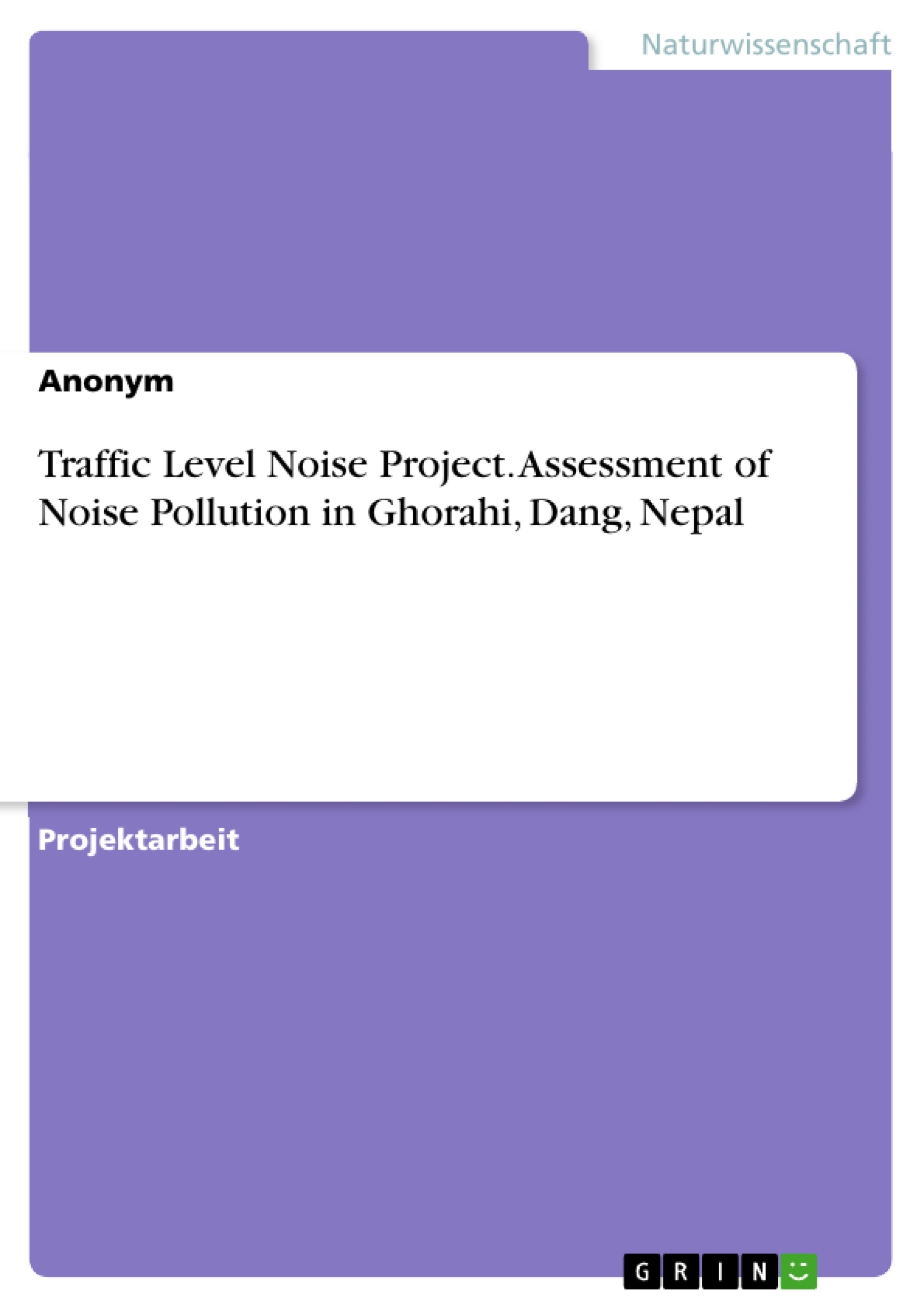Sound is the vibration of medium(solid, liquid and gas) that reaches our ears .Where the noise is unwanted or excessive sound. In developing country like NEPAL experience several environmental problems. These environmental problems include air, water and noise pollution. Out of these three, noise pollution is one of a major concern for people residing in urban areas. Generally noise is the sound that is unwanted or disrupts one‘s quality of life.
When there is lot of noise in the environment, it is termed as noise pollution. Sound becomes undesirable when it disturbs the normal activities such as working, sleeping, and during conversations. Noise pollution, in the recent times, has been well recognized as one of the major environmental problem that impacts the quality of life in urban areas across the globe. Because of the rapid increase in industrialization, urbanization and other communication and transport systems, noise pollution has reached to a disturbing level over the years. But according to WHO the permissible sound level in Silent Zone (40-50 dB), Commercial Zone (55-60 dB and), Heavy Traffic Zone (80-85dB). Above this value, sound becomes pollution and called as noise pollution.
Inhaltsverzeichnis
- 1. INTRODUCTION
- 1.1 SOURCES OF NOISE POLLUTION...
- 1.2 EFFECTS OF NOISE POLLUTION
- 1.3 OBJECTIVE OF STUDY.
- 1.4 SOUND LEVEL METER
- 2. LITERATURE REVIEW
- 3. METHODOLOGY
- 3.1 STUDY AREA.........
- 3.2 MEASURING INSTRUMENT
- 3.3 PARAMETERS USED
- 3.4 PERIODS AND REGULARITY OF MEASUREMENT
- 4. DATA COLLECTION
- 5. ANALYSIS, RESULT AND DISCUSSION
- 6. CONCLUSION AND RECOMMENDATION
Zielsetzung und Themenschwerpunkte
Diese Projektarbeit befasst sich mit der Bewertung der Lärmbelastung in Ghorahi, Dang, Nepal. Das Ziel ist es, den aktuellen Lärmpegel an verschiedenen Standorten in der Stadt zu ermitteln und die Ursachen für die Lärmbelastung zu analysieren. Die Arbeit soll ein tieferes Verständnis der Auswirkungen von Lärm auf die Lebensqualität der Menschen in Ghorahi liefern und Handlungsempfehlungen für die Reduzierung der Lärmbelastung geben.
- Bewertung der Lärmbelastung in Ghorahi anhand von Messungen
- Analyse der Ursachen für die Lärmbelastung in der Stadt
- Identifizierung von besonders lärmbelasteten Zonen
- Bewertung der Auswirkungen von Lärm auf die Gesundheit und Lebensqualität der Bevölkerung
- Entwicklung von Handlungsempfehlungen zur Reduzierung der Lärmbelastung
Zusammenfassung der Kapitel
Kapitel 1: Einleitung
Die Einleitung führt in die Thematik der Lärmbelastung ein und beleuchtet die Problematik in Entwicklungsländern wie Nepal. Es werden die Ursachen, Auswirkungen und die Bedeutung der Lärmbelastung sowie die relevanten Definitionen und Messmethoden erläutert.
Kapitel 2: Literaturrecherche
Dieses Kapitel bietet eine umfassende Übersicht über die bestehende Literatur zum Thema Lärm und Lärmbelastung. Es werden verschiedene Studien und Forschungsergebnisse zu den Ursachen, Auswirkungen und Bekämpfung von Lärmbelastung vorgestellt.
Kapitel 3: Methodik
In diesem Kapitel wird die Methodik der Projektarbeit erläutert, einschließlich der Auswahl des Studienbereichs, der verwendeten Messinstrumente, der gemessenen Parameter und der zeitlichen Abläufe der Messungen.
Kapitel 4: Datenerhebung
Dieses Kapitel beschreibt die Durchführung der Datenerhebung, die Messpunkte in Ghorahi, die Messzeitpunkte und die Art der Datenerfassung.
Kapitel 5: Analyse, Ergebnisse und Diskussion
Dieses Kapitel präsentiert die Ergebnisse der Lärmmessungen, analysiert die Daten und diskutiert die wichtigsten Erkenntnisse. Es werden die Ursachen für die Lärmbelastung in den verschiedenen Messpunkten erläutert und die Auswirkungen der Lärmbelastung auf die Gesundheit und das Wohlbefinden der Menschen in Ghorahi beleuchtet.
Schlüsselwörter
Die Arbeit befasst sich mit den Themen Lärmbelastung, Lärmpegel, Schallpegelmesser, Ruhezonen, Geschäftszonen, Verkehrszonen, Umwelt, Lärmverschmutzung, Auswirkungen von Lärm, Gesundheitliche Auswirkungen, Lärmschutz, Maßnahmen zur Lärmreduktion.
- Quote paper
- Anonym (Author), 2022, Traffic Level Noise Project. Assessment of Noise Pollution in Ghorahi, Dang, Nepal, Munich, GRIN Verlag, https://www.grin.com/document/1170094



